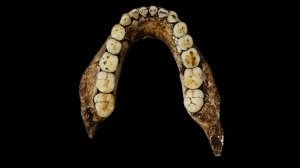Age is nothing but a number when it comes to unravelling the relationships of species from our past. We do not know the actual geological age of the Dinaledi fossils, the single largest fossil hominin find in Africa, but the discovery of Homo naledi still provides insight into how our ancestors evolved.
The Dinaledi fossil collection is one of the most complete ever discovered, representing nearly the entire anatomy of a previously unknown species. Yet our team made no statement or conclusion about the fossils' geological age. I reviewed with Ed Yong some of the reasons why it is difficult to determine the age of the fossils.
The bottom line is that, for now, we have little idea how old the fossils may be.
Most fossil hominins are found in association with extinct animals, which give us at least a general indication of their age. Famous fossil discoveries from more than a century ago, such as the Spy Neanderthal skeletons from Belgium and the first Homo erectus from Java, were found together with long-extinct creatures that indicated they were of great antiquity. This won’t work for Homo naledi because we have found no other animals in association with the hominin bones.
Even today, with methods that rely upon radioactive isotopes to determine the absolute ages of rock layers, geologists often have to revise their initial ideas of the ages of fossils.
Across the last 45 years, the age of the famous KNM-ER 1470 skull of Homo rudolfensis, from Koobi Fora, Kenya, has swung upward and down by more than a half million years as geologists revised age estimates of the famous KBS Tuff. The age of the Sterkfontein Member 4 fossils has been notoriously difficult to determine. Different teams have produced very different ages for the famous Little Foot skeleton from the Silberberg Grotto of Sterkfontein, ranging over more than a million years.
In other words, it pays to be cautious about geology.
But how old is it?
Our lack of a geological age for the fossils caught some other experts by surprise. Carol Ward, of the University of Missouri, commented to The Atlantic:
“Without dates, the fossils reveal almost nothing about hominin evolution, beyond supporting the growing realisation that there was much more species diversity than previously thought.”
William Jungers, from Stony Brook University, said in The Guardian.
“If they are as old as two million years, then they might be early South African versions of Homo erectus, a species already known from that region. If much more recent, they could be a relic species that persisted in isolation. In other words, they are more curiosities than game-changers for now.”
Whether it turns out to be 20 000 years or 2 million years old, Homo naledi is equally distinct from Homo erectus either way. The age of the fossils is simply not relevant to their relationships with other hominins. In the study of anatomy, we focus on the shared features of different species, not their age.
Indeed, so-called relic species can be among the most important indicators of biological relationships, survivors that carry anatomical features from deep time. The coelacanth is much more than a curiosity: its anatomy provides vital clues that helped scientists understand how early land creatures could evolve from lobe-finned fish ancestors.
How our ancestors evolved
No matter its geological age, Homo naledi may provide vital clues about the way our ancestors stepped along a humanlike evolutionary path. This is where the real mystery comes in.
When we look across the skeleton of Homo naledi, we see some puzzling combinations of features. Homo naledi has a foot nearly the same as our own, much more humanlike than any early hominin we’ve discovered so far. Yet its hip and thighbone seem more primitive.
Likewise, Homo naledi had a hand and wrist that were largely humanlike, suitable for manipulating objects and possibly making tools. Yet powerful thumbs, curved finger bones and a shoulder canted upward like an ape’s shoulder suggest that its arms were used for climbing much more than any human today.
The skull of Homo naledi is built like those of early Homo species, especially Homo erectus, but its brain was just more than half the size of the average Homo erectus. Meanwhile, Homo naledi had teeth that were smaller than average for any early Homo species, a trait we have usually linked to eating better, more calorie-rich foods like meat or starchy tubers.
It’s almost as if Homo naledi evolved from the outside in.

The traits in direct contact with its environment, used for walking, handling things, and eating, are the most humanlike. The core of Homo naledi’s body, its brain, ribcage and hips, were more like our very distant relatives, the australopiths.
These combinations make it hard to be sure exactly where Homo naledi fits on our family tree. If we trust the humanlike foot and hand, and the Homo erectus-like cranial form, then Homo naledi looks like it may be closer to us than Homo habilis, the famous handy man.
Whether it is closer or not, Homo naledi’s features show that the key changes leading to our genus may have had nothing to do with a large brain. Testing this will bring us closer to understanding the causes that made us human.
John Hawks is a core scientist on the Rising Star Expedition team and co-author on the papers describing Homo naledi.
![]()
Written by John Hawks, Paleoanthropologist, University of Wisconsin-Madison
This article was originally published on The Conversation. Read the original article.
EMAIL THIS ARTICLE SAVE THIS ARTICLE
To subscribe email subscriptions@creamermedia.co.za or click here
To advertise email advertising@creamermedia.co.za or click here











